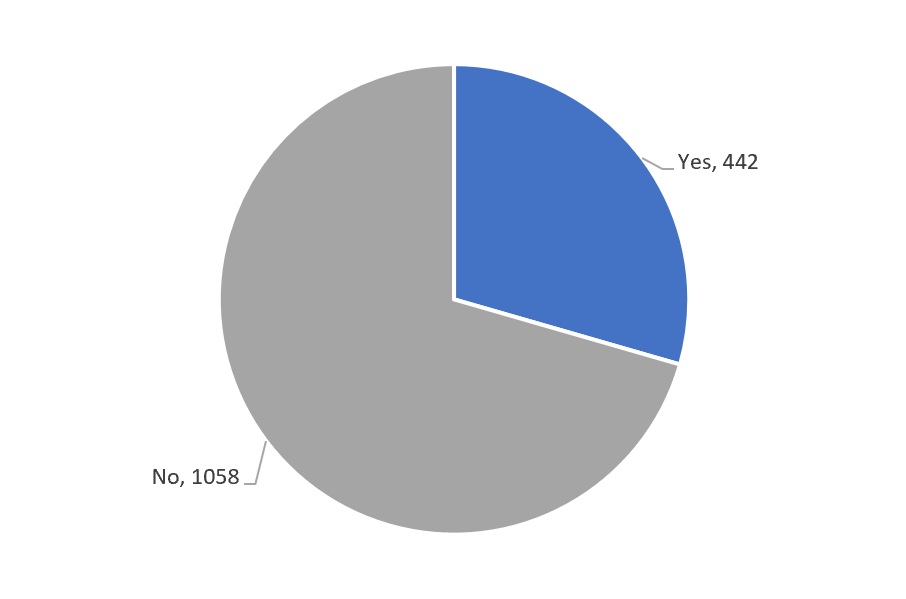CMEPS-J Report No. 55 (March 31, 2021)
Hiroyuki AOYAMA
Yutaka TAKAOKA
Shingo HAMANAKA
Kota SUECHIKA
Aiko NISHIKIDA
Kohei IMAI
Dai YAMAO
Masaki MIZOBUCHI

I. Purpose
The purpose of “Middle East Public Opinion Survey (Agriculture and Food Security in Syria 2020-2021)” is to know how Syrian citizens evaluate the general situation of agriculture and food security.
II. Cooperative Organizations and Collaborative Research Projects
In conducting the survey, we have had full support of the Syrian Opinion Center for Polls & Studies (SOCPS, الرأي مركز والدراسيات للاستطلاع السوري, Director Rizq Elias) to finalize the contents of the questionnaire, doing samplings, making interviews with poll subjects and inputting data.
Coordination with SOCPS was made en bloc by Hiroyuki AOYAMA (professor at Tokyo University of Foreign Studies), who is the principal investigator in the project entitled “Roles of Informal Actors in Reconstruction and/or Destruction of the State: Case Studies of the Arab East”.
III. Method of Survey
1. Survey Schedule
-
- May 4 – July 22, 2020: Drafting of the questionnaire jointly by SOCPS and members of the project “Roles of Informal Actors in Reconstruction and/or Destruction of the State: Case Studies of East Arab.”
- July 26, 2020: Training of SOCPS survey staff on conducting a pre-test using the draft questionnaire.
- July 27 – August 16, 2020: Four members of SOCPS survey staff conduct the pre-test.
- August 16 – 23, 2020: The pre-test by SOCPS was aggregated.
- August 23 – 31, 2020: SOCPS survey staff verify the results of the pre-test and submit them along with the proposed amendments to the draft questionnaire to members of the project. Members from both outfits jointly finalize the questionnaire.
- September 1 – 3, 2020: SOCPS survey staff and directors are trained on the implementation of the project.
- September 4 – October 23, 2020: SOCPS (survey staff and directors) conduct the main survey.
- October 24 – November 15, 2020: Survey data entry by SOCPS.
- November 16 – 30, 2020: Confirming entered data by SOCPS.
- December 1, 2020 – January 30, 2021: Final report prepared by SOCPS.
2. Survey Subjects
A total of 1,700 male and female Syrian nationals, aged between 18 and 70 years and residing in the Syrian Arab Republic, were selected to participate in the survey. Data from 1,500 respondents were used for the analysis (200 people did not respond and were therefore excluded from the study).
The 1,500 respondents included 750 men and women who had moved abroad as refugees or migrants during the period from 2011 to 2015 and who stayed in Syria during this period (including internally displaced persons (IDPs)).
Note: the number of men and women who had moved to their current address since 2015 (refugees or migrants) was later confirmed to be 753, not 750.
3. Survey Method
-
- Door-to-door individual personal interview in Arabic.
- Number of participating staff: 56 (45 survey staff members and eleven directors).
4. Sampling Method
Samples were extracted in the following manner:
(1) The data of the Central Bureau of Statistics, Office of the Prime Minister of Syria (2014), and civil status records for every governorate except for the Aleppo, Idlib, and Deir ez-Zor governorates (2019) were used for the survey.
(2) Samples were obtained using the quota method.
First: Eleven governorates representing industrial structure and lifestyle in Syria were selected from five geographical regions.
-
-
- For the southern region (consisting of the Damascus, Damascus Suburb, Quneitra, Daraa, and As-Suwayda governorates), the Damascus, Damascus Suburb, and Daraa governorates were selected.
- For the northern region consisting of the Aleppo and Idlib governorates, both were selected.
- For the central region consisting of the Hims and Hamah governorates, both were selected.
- For the coastal region consisting of the Latakia and Tartus governorates, both were selected.
- For the eastern region (consisting of the Al-Hasakah, Deir ez-Zor, and Raqqa governorates), the Al-Hasakah and Deir ez-Zor governorates were selected.
-
Of the selected governorates, 140 samples were assigned to the Damascus governorate, and 136 samples were assigned to the others.
Second: The cities, towns, villages, and blocs listed in the 2014 data of the Central Bureau of Statistics were selected as survey areas.
Survey Areas
| Governorate | District | Area | City/Town/Village/Bloc |
| Damascus | Mezzeh 86 (School, Khazzan), Eastern Mezzeh Villas, Western Mezzeh Villas, Shikh Saad, Mezzeh Autostrad, Al Midan, Al Zahera, Babtouma, Dwel’a, Kafar Sousah, Masakin Barzeh, Masakin Barzeh Hamish, Masakin Barzeh Prefabricate, , Ruken Al Din, Ruken Al Din Salah al-Din, Al Baramkeh, Al Salhiyeh, Old Mezzeh, Al Halbouni, Al-Koussour | ||
| Aleppo | Mount Simeon | Mount Simeon | Aleppo (Center, Sayf al-Dawla, Al Jamelaiah, al-Mashhad, Salaheddine, Sukkari, Midan, Bustan al-Pasha, al-Sha”ar) |
| Dail Hafir | Dail Hafir | Dail Hafir, Hazaza | |
| East Kuweires | Rasm al-Abed | ||
| Damascus Suburb | Yabroud | Yabroud | Yabroud |
| Al Qutayfah | Al Qutayfah | Al Tawani | |
| Qudssaya | Qudssaya | Qudssaya | |
| An Nabk | An Nabk | An Nabk | |
| Damascus Suburb | Babilla | Babilla, Bayt Sahm | |
| Jaramana | Jaramana | ||
| Mlaiha | Mlaiha | ||
| Al Kiswa | Al Horjelah | ||
| Hims | Hims | Hims | Hims (Center, Al Adawiyeh, Bab Alsebaa, Al Walid Suburb, Al Zahra, al-Hudr, Wadi Aldahab, An’nouzha, Karam al-Shami, Al Hameediye, Karam el-Looz, Alarman, al-Sabil, al-Wurud, al-Bayyada, Al Inshaat, Al Boughtassia, Masakin al-Shurta, Dahiya al-Majd, Bab al-Durayb, Akrama, Al-Shammas, Al Iddikhar, Al Dablan, Al Hamra, Old Akrama, Al Hadara) |
| Hamah | Masyaf | Jubb Ramlah | Mahrusah, Hazana, Qren |
| Ain Halakim | Barshime, Kefr Kamrah | ||
| Awaj | Awaj | ||
| Suqailabiyya | Suqailabiyya | Suqailabiyya (Sahm al-Baydar, Sultama), Ein Elkorum | |
| Salhab | Salhab | ||
| Shathah | Mirdash | ||
| Qalaat Al Madiq | al-Qahira | ||
| Hamah | Hamah | Matnin, Jarjarah | |
| Hirbnafsah | Hirbnafsah, Jadrine, Kherbet Elqasr | ||
| Salamiyah | Salamiyah | Salamiyah (West, North, Center, East, Masakin Gharbiya, Western Zahr al-Maghar) | |
| As San | As San | ||
| Latakia | Latakia | Latakia | Latakia (Center, Demsarkho, al-Da’tur, Qunaynis), Al-Shamiyah, Burj al-Qasb, Sinjwan |
| Ain Al Beida | Ain Al Beida, al-Turba, Qasmin, Al Knaysat, Al-Qanjra, Kirsana, Al-Shabatliyah, al-Sarsakiya | ||
| Al Bahlouliyah | Balluran, Fideo, Al Hannadi, Al Bahlouliyah, al-‘Umruniya, Al-Jinderiyah, ‘Ayn al-Laban | ||
| Al Hannadi | Fideo, Al Hannadi | ||
| Al Haffah | Muzayraa | Quwayqa, Muzayraa | |
| Kinsabba | Kinsabba | ||
| Slanfah | Slanfah | ||
| Jablah | Ain Ash Sharqiyah | Ain Ash Sharqiyah | |
| Al-Qutailibiyah | Dwaer Baabda | ||
| Qardaha | Al Fakhoura | Wata Dayr al-Zaytun | |
| Idlib | Idlib | Idlib | Idlib (Al-Qusoor, al-Thawra, al-Dubayt, Suq al-Sagha, North, University, West, Masakin al-Mu’allimin, al-Arba’in Street, Roundabout Mihrab, al-Na’ura, Suq al-Sa’a, Ma’mal al-Tin, al-Kasih, al-Suq al-Ra’isi, Suq al-Khudar) |
| Sarmin | Sarmin | ||
| Arihah | Arihah | Arihah (Roundabout Ariihah, al-Jabal (al-Arba’in) Street, al-Jisr (al-Shughur) Street, al-Sina’a) | |
| Al-Hasakah | Al-Hasakah | Al-Hasakah | Al-Hasakah (Palestine Street, al-Matar, al-Kaddasa, al-Sina’a, Masakin al-Atibba’, Tall Hajar, West Geweran, al-Mufti, al-Nasira, Nushuwa Villas, al-‘Umran, Roundabout Sinalco, President Garden, Kabbaba, Masakin Ugarit, Masakin Marrcho, Masakin al-Maliya, Aziziyah, al-Nushuwa, West al-Nushuwa, Salhiye, Geweran), Tall Rif’at |
| Bir al-Helou al-Wardiya | Tell Brak | ||
| Tall Tamr | Tall Tamr | ||
| Qamishli | Qamishli | Qamishli (Center, Altai) | |
| Al-Qahtaniyah | Al-Qahtaniyah | ||
| Tall Hamis | Tall Hamis | ||
| Al-Malikiyah | Al-Malikiyah | Al-Malikiyah | |
| Al Jawadiah | Al Jawadiah | ||
| Al-Ya’rubiyah | Al-Ya’rubiyah | ||
| Deir ez-Zor | Deir ez-Zor | Deir ez-Zor | Deir ez-Zor (Al Jorah, Al-Qosoor, Al Afri, al-Muwazzafin, Al Jbelah, Hamidiyeh), Al Bogeleyyah, Ayyash, Hatlah, Al-Hussainiyah |
| Al Mayadin | Al Mayadin | Al Mayadin (Center, al-Bal’um), al-Tayba | |
| Sabikhan | al-Hawi | ||
| Al Bukamal | Al Bukamal | Al Bukamal | |
| Tartus | Baniyas | Baniyas | Dayr al-Bishl, Al Garzeyeh, Farish Ka’biya, al-‘Arqub |
| Annaza | Annaza, Nahr, Altun al-Jard, Bustan Alhamam, Aliqa, Na’mu al-Jard, Ghansala, al-Dardara, Babluta | ||
| Talin | Talin | ||
| Tartus | Tartus | Tartus(Center, al-Thawra Street, Sixth Project, al-Insha’at), Al-Shaykh Saad | |
| Ash Shaykh Badr | Ash Shaykh Badr | Ash Shaykh Badr | |
| Al Qamsiyah | Al Qamsiyah | ||
| Bramanat Elmashaeekh | Bramanat Elmashaeekh | ||
| Safita | Mashta Al Hilu | Mashta Al Hilu, Kafroun | |
| Albarkieh | Albarkieh, Qal’a al-Nimra | ||
| Daraa | Izraa | Izraa | Izraa (Center), Dhunayba, Buser al Harir, Asim |
| Al Hrak | Nahta, Al Hrak | ||
| Al Sheikh Maskin | Naamer, Qarfa, Al Sheikh Maskin | ||
| Nawa | Nawa | ||
| As Sanamayn | Ghabagheb | Jbab, Khabab | |
| Elmismyah | Elmismyah | ||
| Daraa | Daraa | Daraa (al-Shamali, al-Khawsa, al-Mahatta,al-Kashif, al-Matar, Center, al-Sabil,al-Dahiya, al-Sahari) | |
| Dael | Dael, Ibtta | ||
| Khirbet Ghazaleh | Khirbet Ghazaleh | ||
| Muzayrib | Al Yadudah | ||
| Bosra | Bosra | ||
Survey Areas (Map)
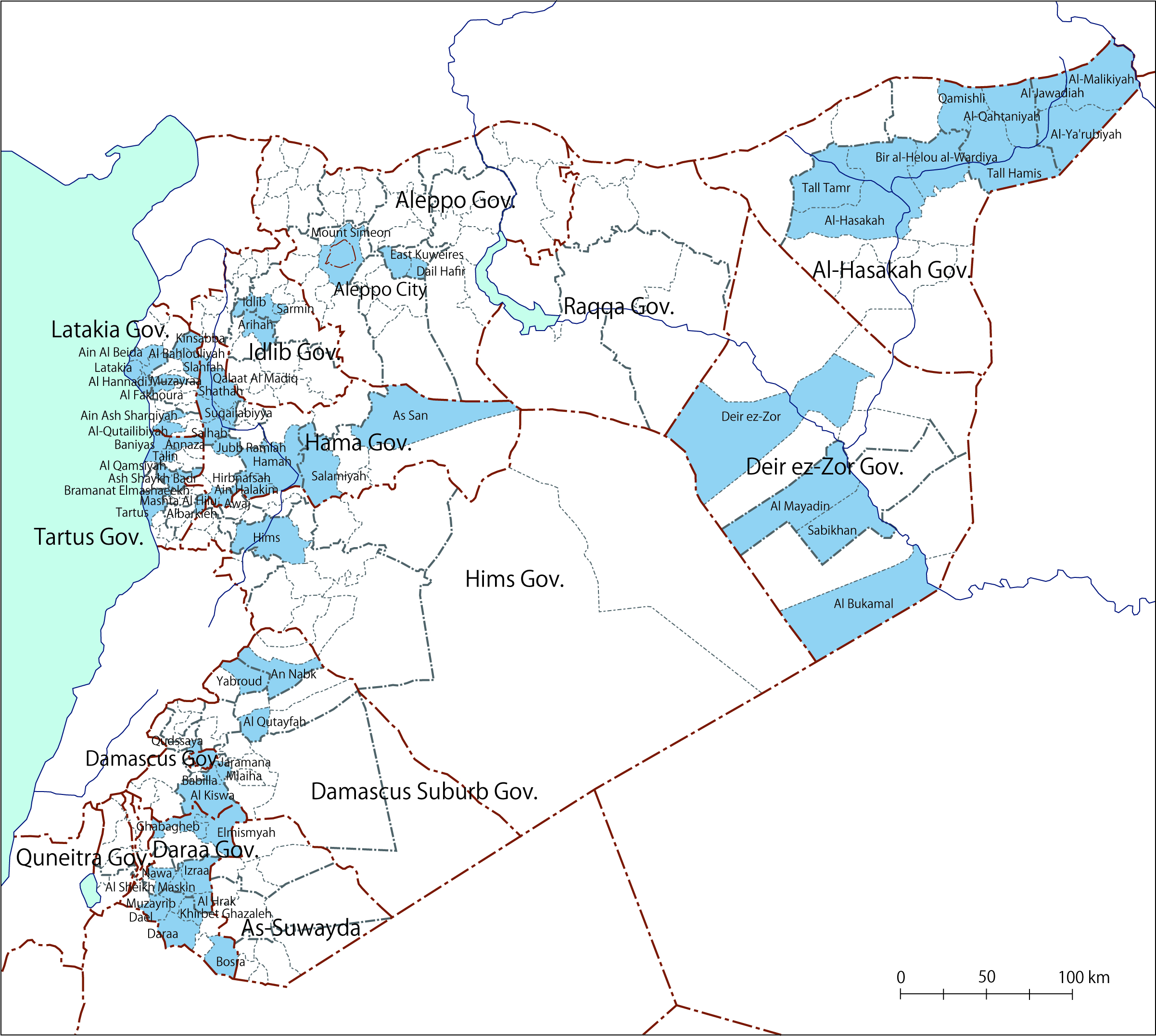
(3) Confirmed whether samples had experience of moving as refugees, migrants, or IDPs before 2015.
The countries where former refugees and IDPs had been evacuated are as follows:
| Current Address | Countries where former refugees and IDPs had been evacuated |
| Damascus | Egypt, Turkey, UAE, Saudi Arabia (some to Germany) |
| Aleppo | Turkey (some to Germany) |
| Damascus Suburb | Lebanon, Saudi Arabia, Turkey |
| Hims | Lebanon, Jordan, Iraq |
| Hamah | Turkey, Egypt, Lebanon (some to Germany) |
| Latakia | Lebanon, Turkey (some to Germany) |
| Idlib | No refugees or migrants |
| Al-Hasakah | Iraq (Erbil, Dohok), Turkey (Şanlıurfa, Gaziantep, refugee camps) |
| Deir ez-Zor | Lebanon (some to Iraq) |
| Tartus | Lebanon, Germany (some to Turkey) |
| Daraa | Jordan(Refugee camps), Saudi Arabia, UAE |
IV. Aggregate Results
1. How satisfied are you with your current social and economic situation in Syria?

2. How much of a burden do food insurance costs place on your family?

3-1. Did your family have adequate food last year?
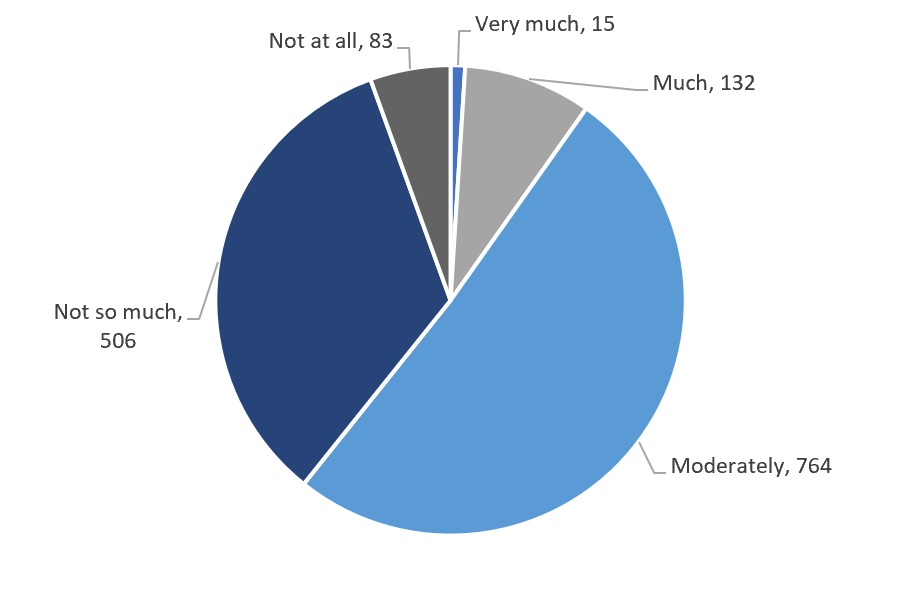
3-2. Choose three types of foods that have been difficult for you to obtain in the past year.

3-3. To what extent do the following reasons affect your access to food?
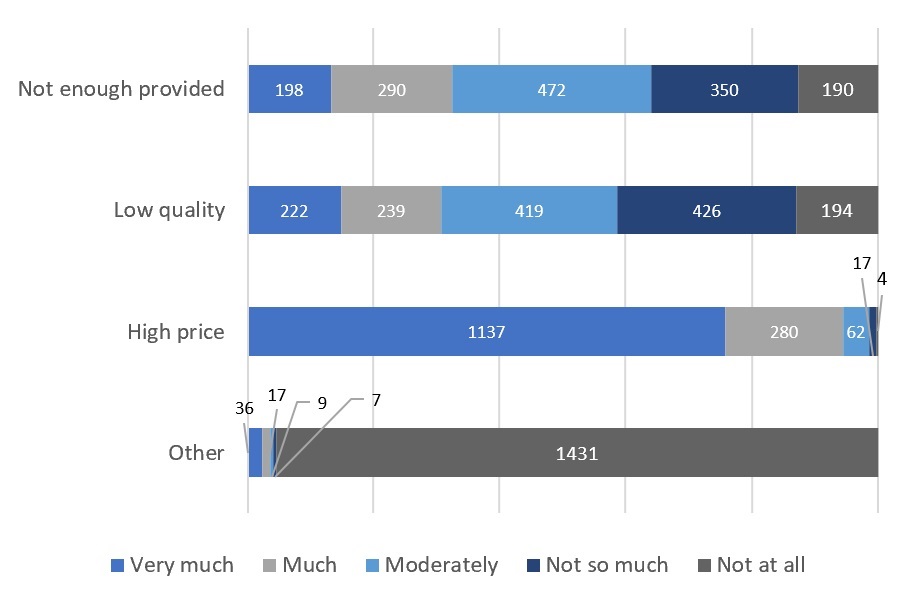
4. How often does your family eat the following basic foods?
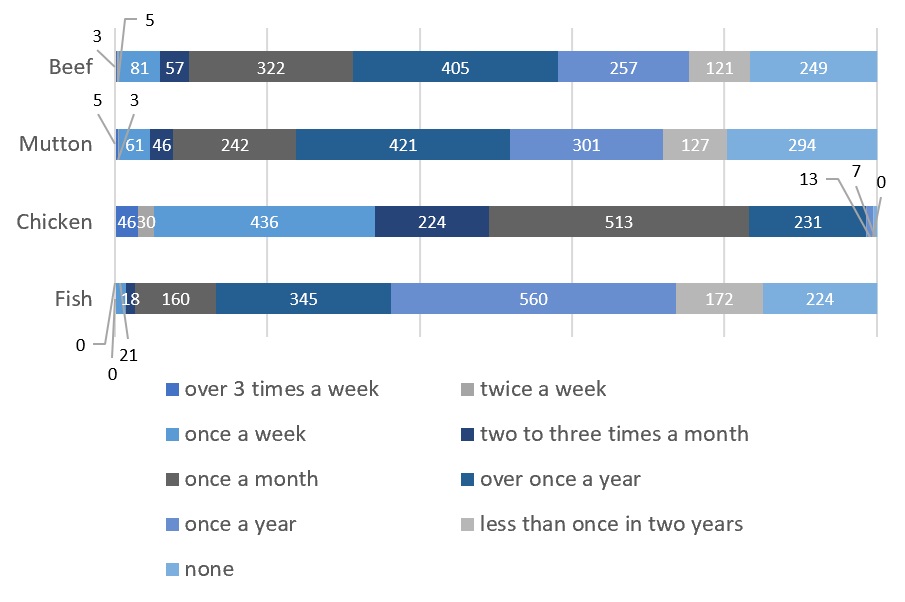
5. To what extent do you ensure that the food you purchase does not contain added fertilizers, pesticides, biological feed and biotechnologies (i.e. 100% natural)?
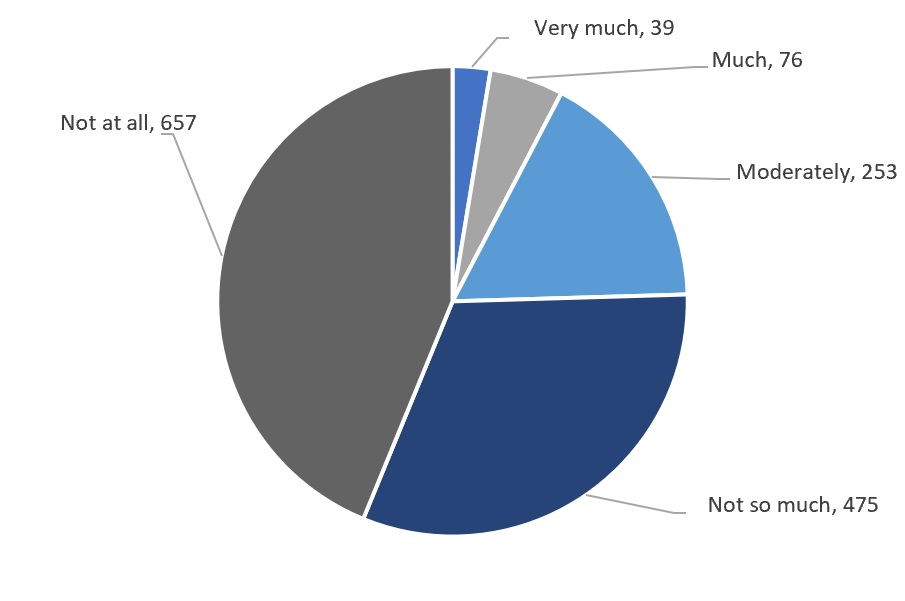
6-1. Syria is still facing hardships, not only due to the war, but also the novel coronavirus. In this difficult situation, choose three issues that you believe should be addressed by the Syrian government as priorities.

6-2. From the answers above, choose three issues toward which you want to actively contribute (encircle the numbers).

7. If the period after the outbreak of the crisis in 2011 is considered, what is the degree of the impact of the following problems on the Syrian economy?
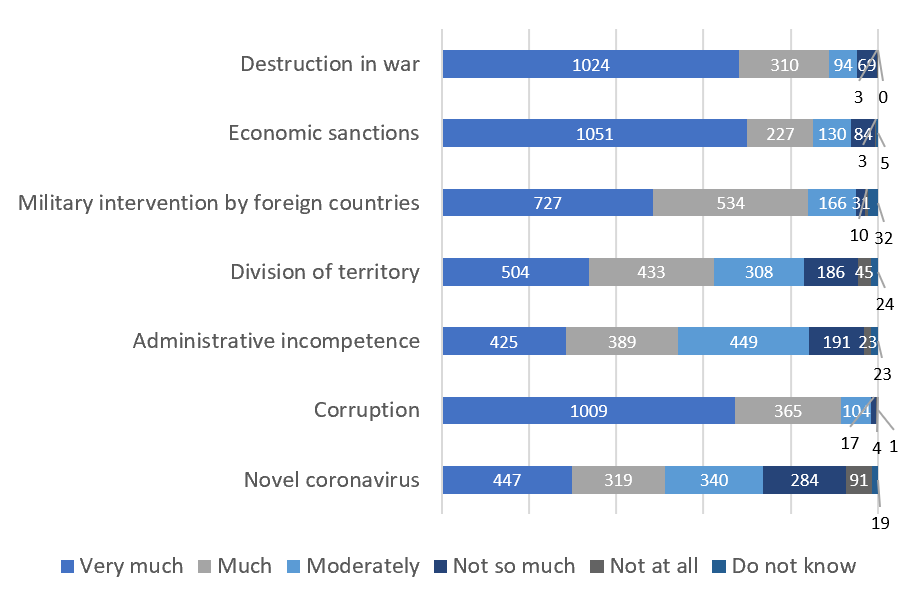
8. To what extent have you got assistances so far from the organizations working in Syria?
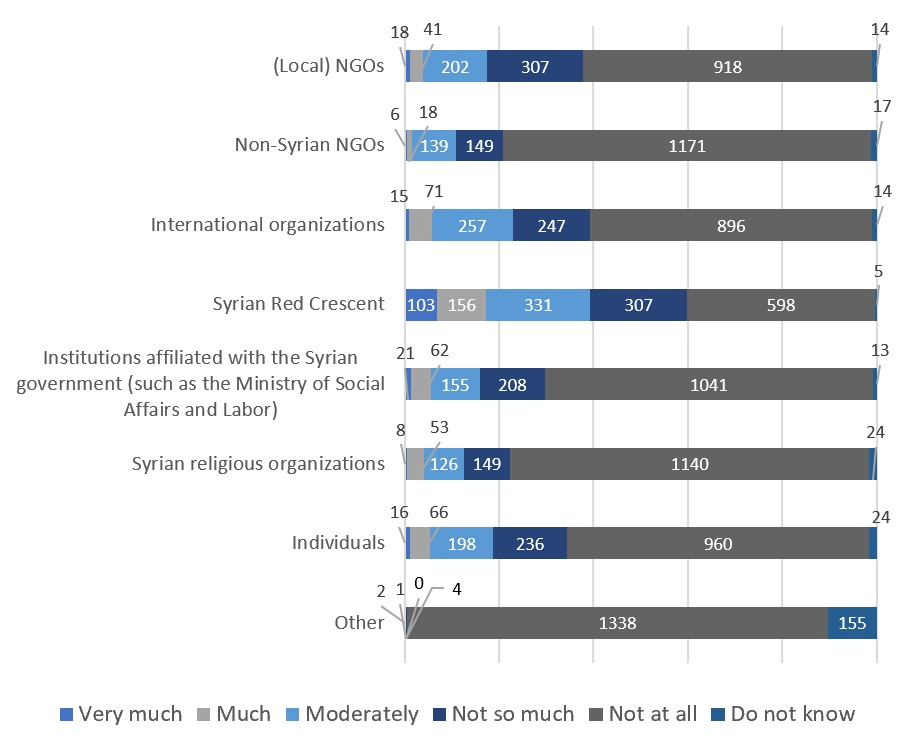
9. Choose three sectors that you think should be prioritized to overcome the current difficulty (the general situation).
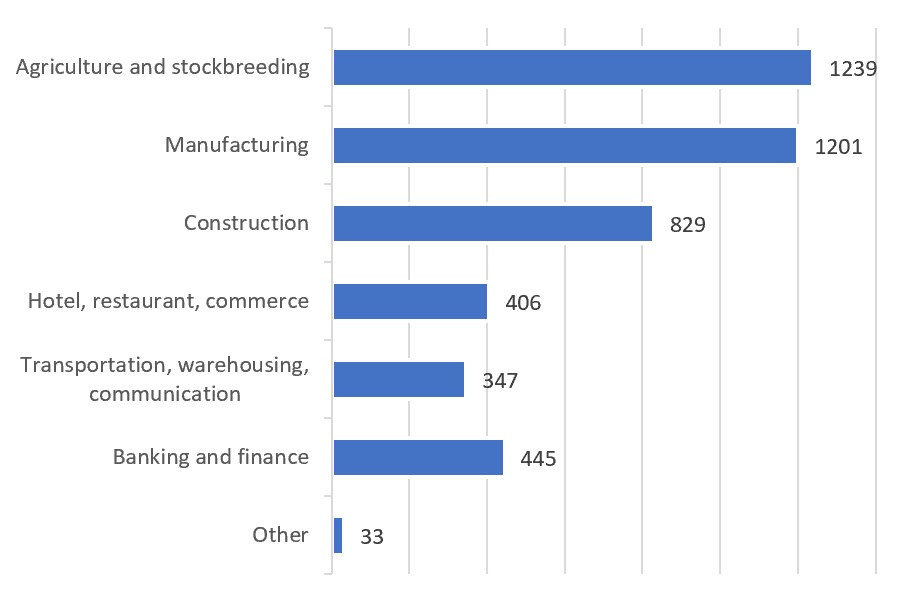
10. To what extent have the government’s measures regarding damages to the agricultural sector after the outbreak of the crisis in 2011 been effective?

11. Choose three agricultural measures that you think should be prioritized to overcome the damages mentioned in Questions 10-1, 10-2 and 10-3.
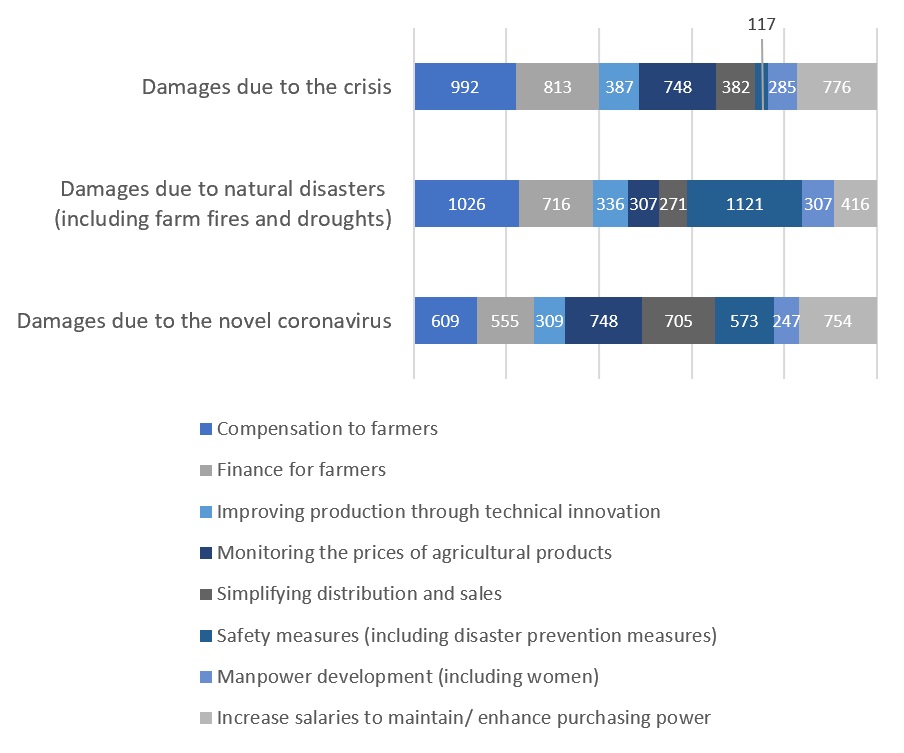
12-1. To what extent do you expect the following foreign countries’ (or organizations) assistance in the following items to provide food security to increase? (Importing agricultural products)
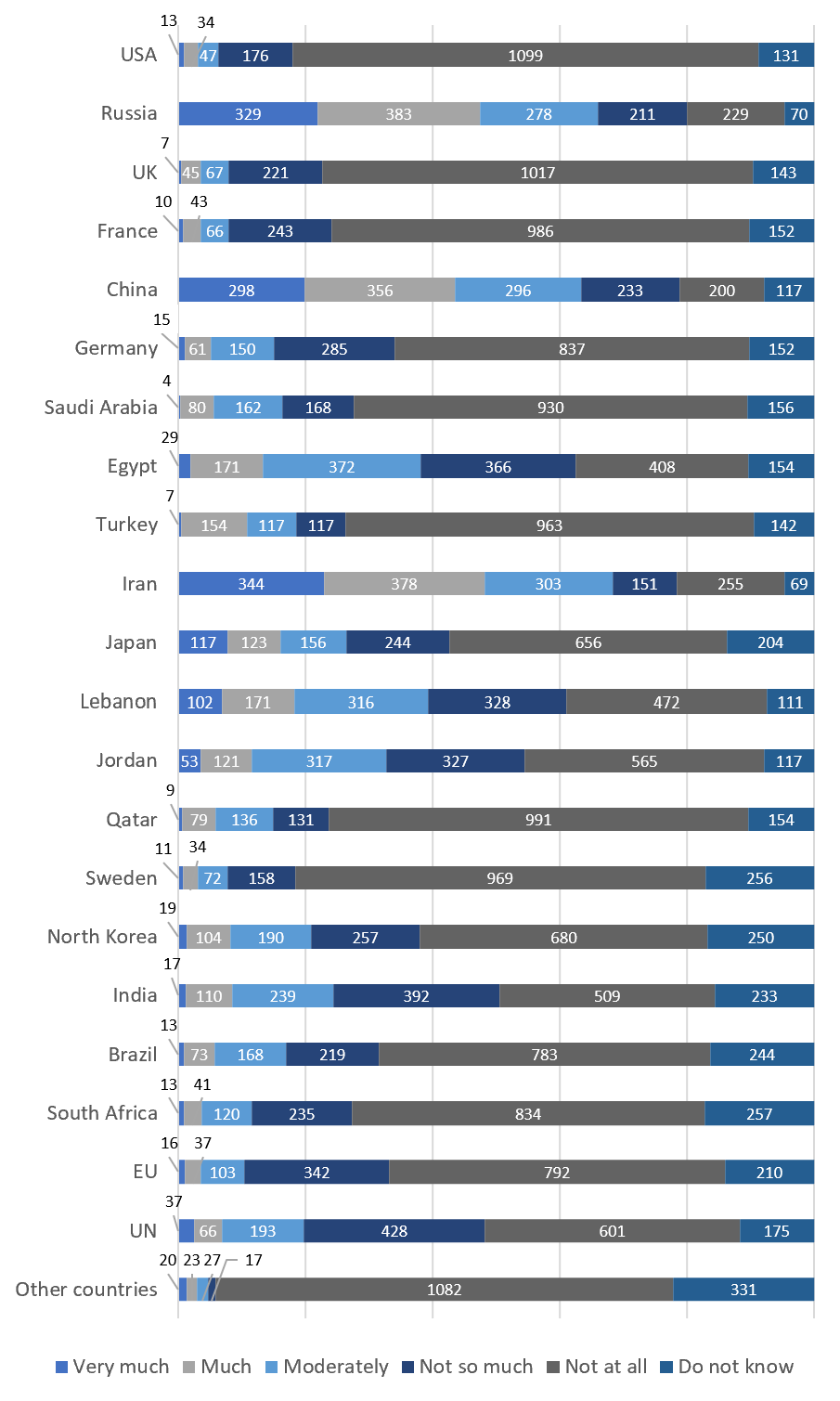
12-2. To what extent do you expect the following foreign countries’ (or organizations) assistance in the following items to provide food security to increase? (Exporting Syrian agricultural products)
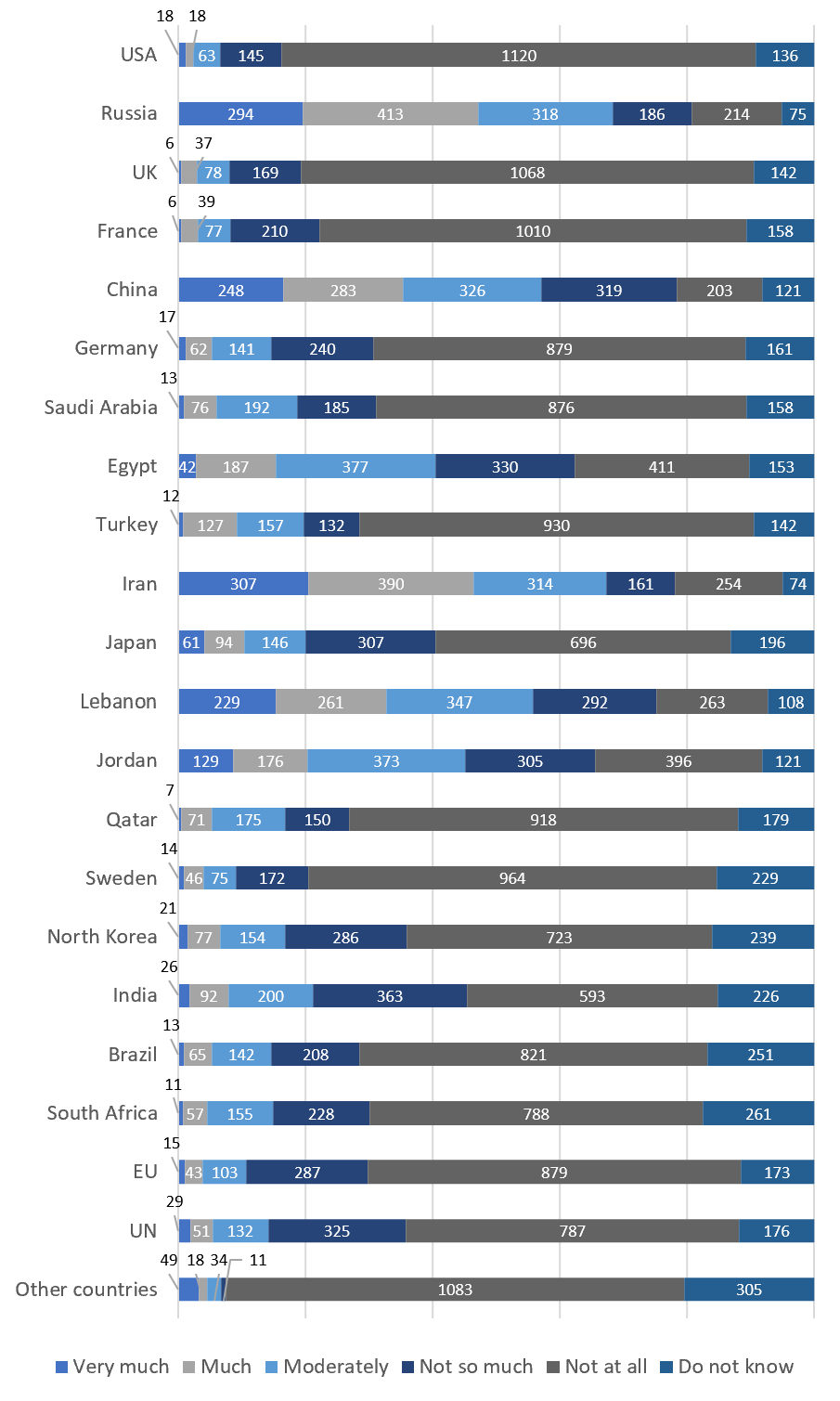
12-3. To what extent do you expect the following foreign countries’ (or organizations) assistance in the following items to provide food security to increase? (Providing and transferring technology)
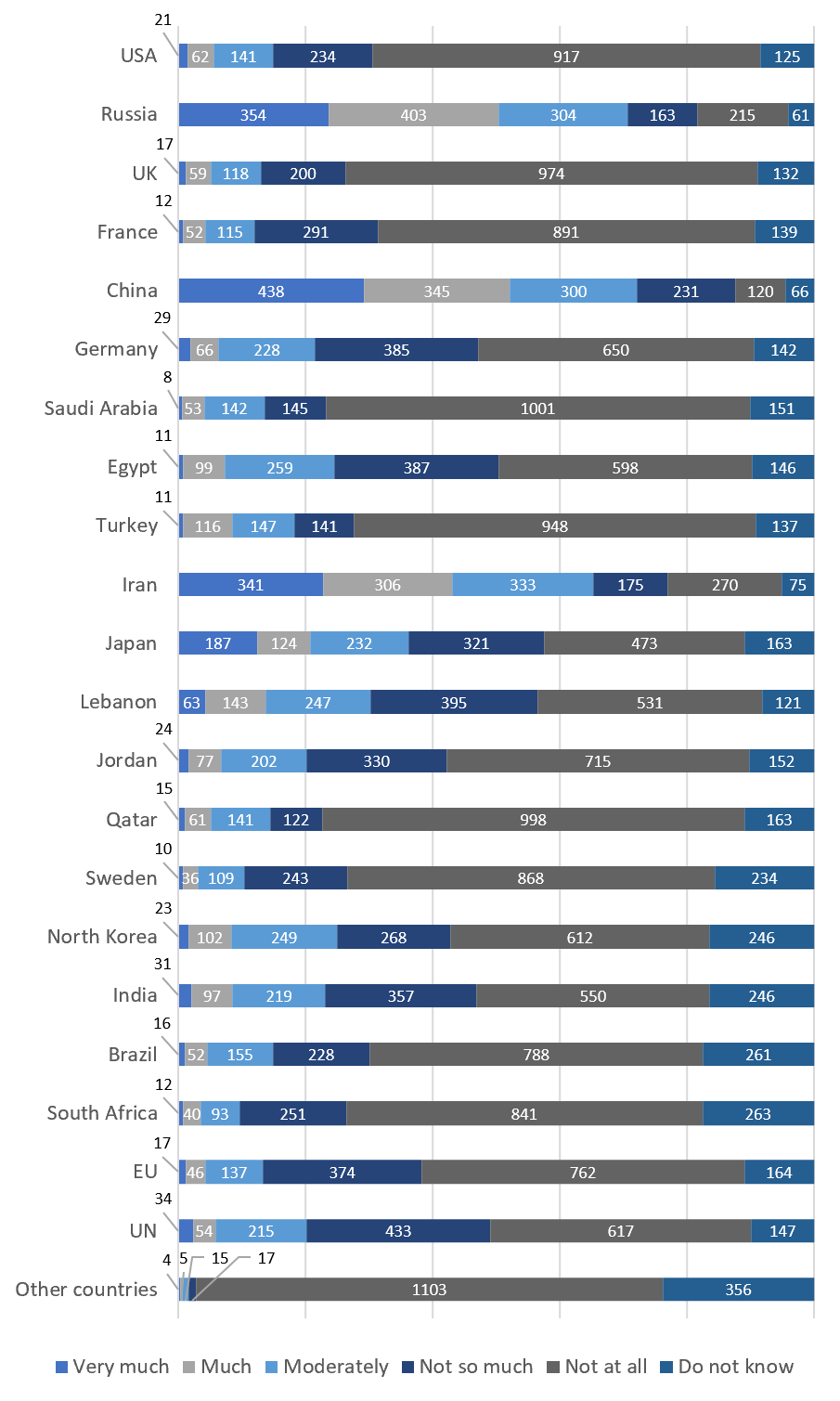
12-4. To what extent do you expect the following foreign countries’ (or organizations) assistance in the following items to provide food security to increase? (Providing equipment)

12-5. To what extent do you expect the following foreign countries’ (or organizations) assistance in the following items to provide food security to increase? (Providing manpower)
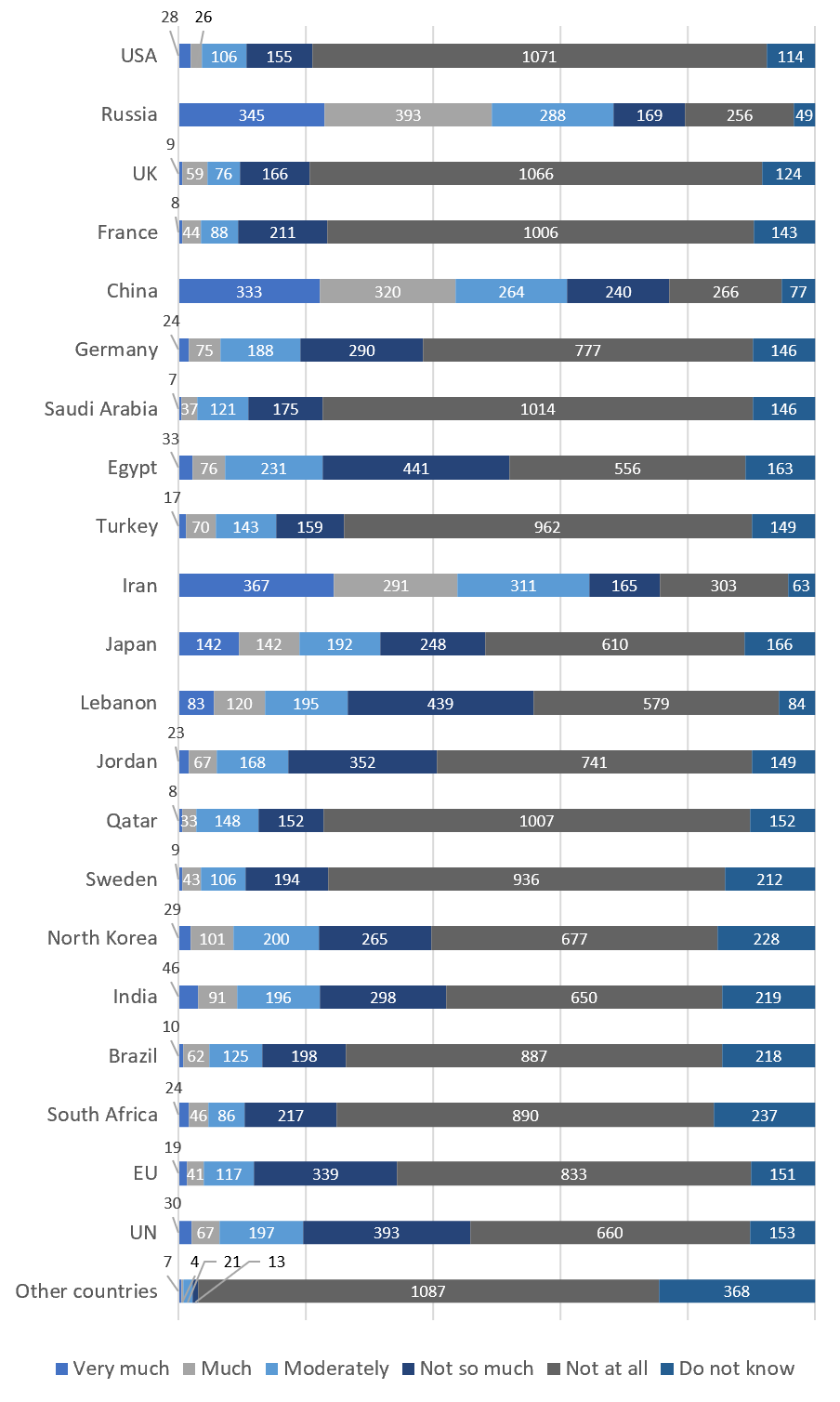
13-1. Choose the three botanical products that are the most prevalent in your place of residence.
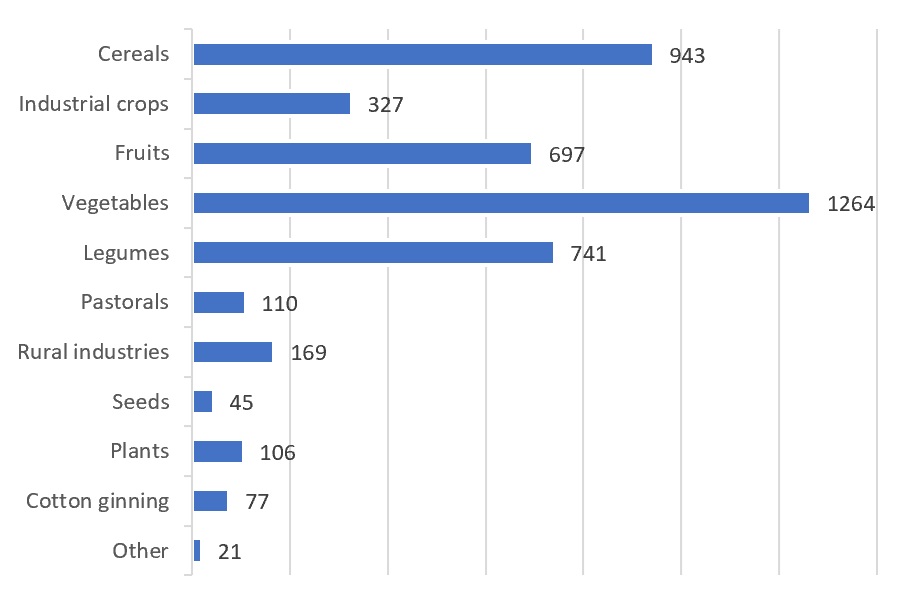
13-2. Choose the three animal products that are the most prevalent in your place of residence.
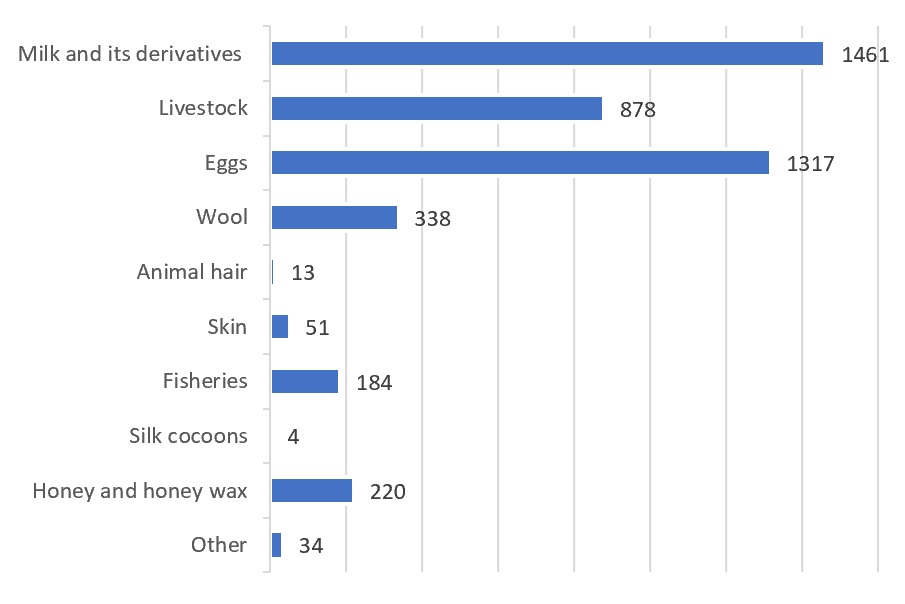
14-1. Taking into consideration the price, distribution conditions and quality control of agricultural products, prioritize the following sales agents from your point of view.
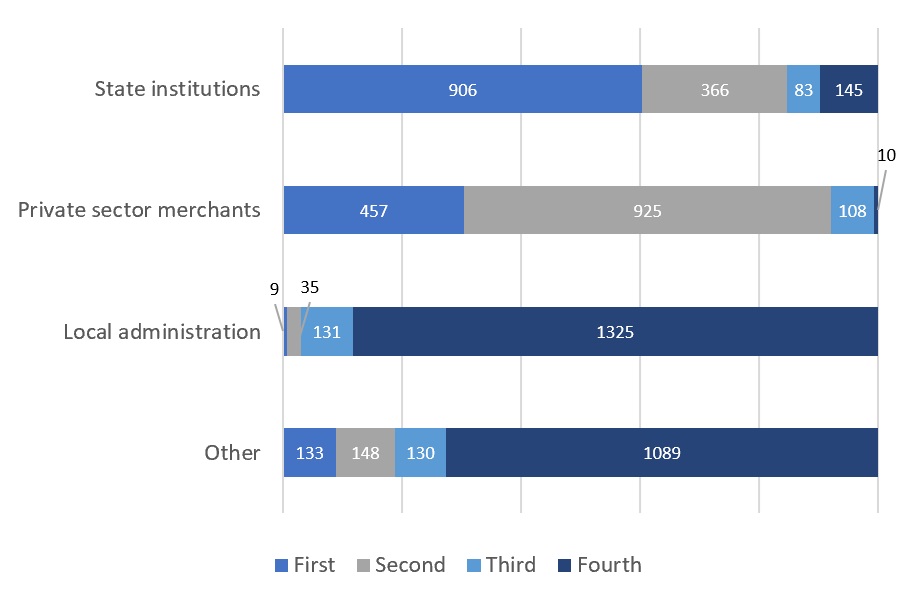
14-2. Choose the reason for prioritizing the sales agents mentioned in the previous question (Question 14-1).
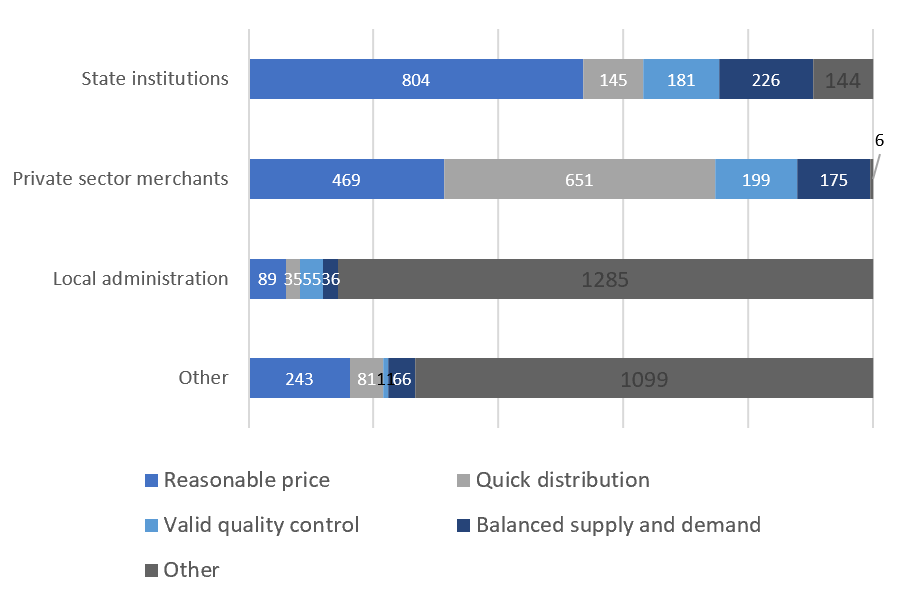
15-1. To what extent do you want to work in the following sectors?

15-2. Choose three reasons why you want to work in the sectors selected in the previous question (Question 15-1).
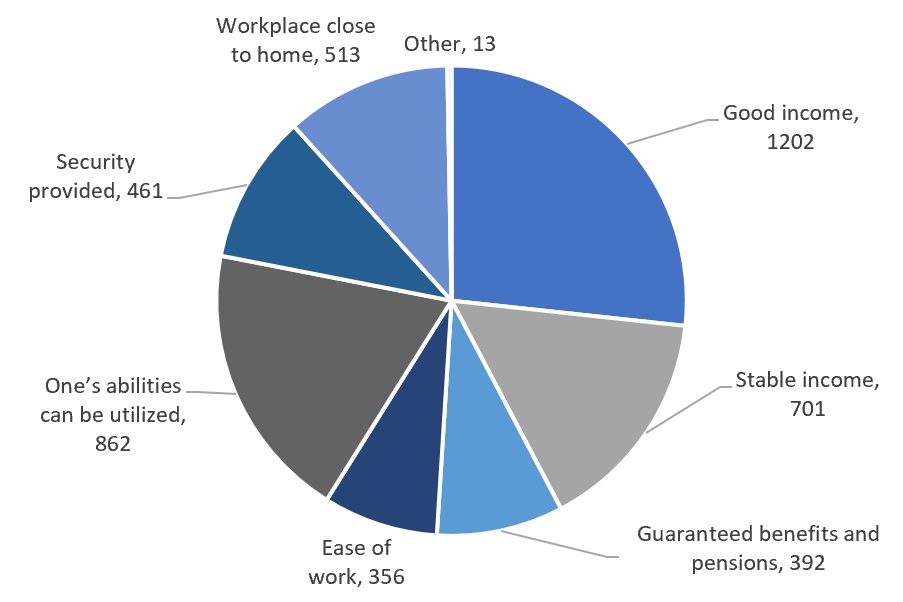
15-3. How many times have you changed your job since the outbreak of the crisis in 2011?

16. To what extent are the following benefits important in changing your current residence?

Personal Data
1. Sex

2. Birth year

3. Current address
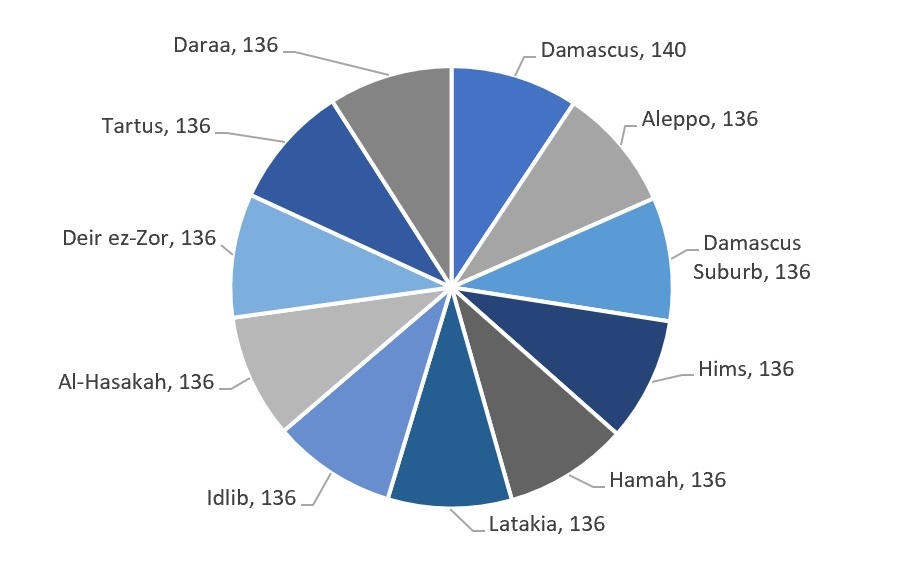
4-1. Since when do you live at your current address?
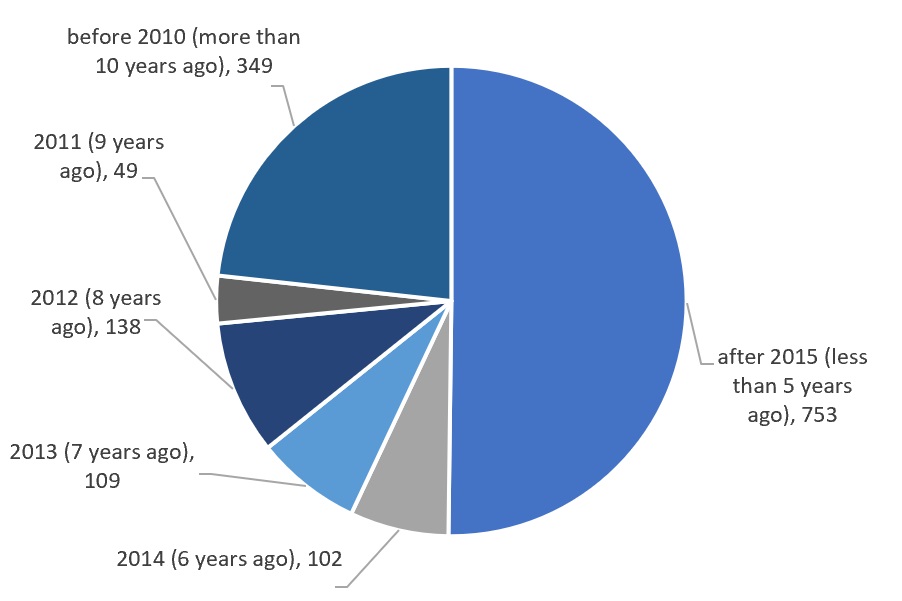
4-2. Since the crisis, how many times have you moved until you choose your current address?
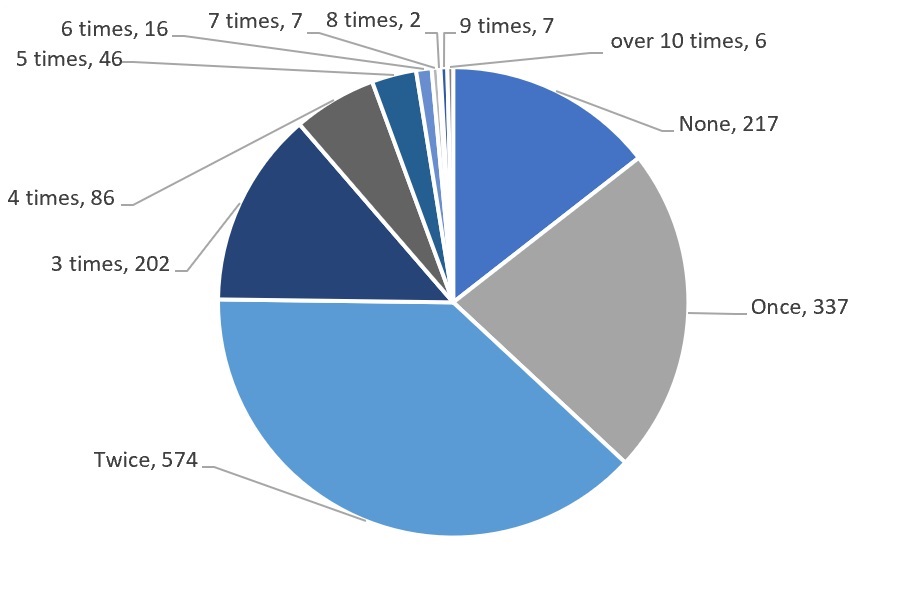
4-3. (If your answered more than twice in 4-2.) How long did it take since you transferred for the first time?
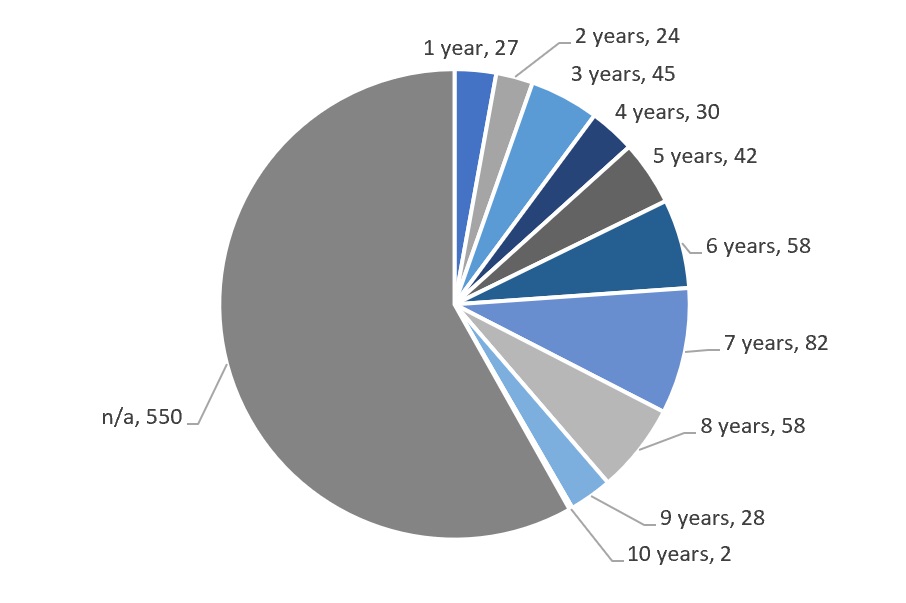
5. Birthplace
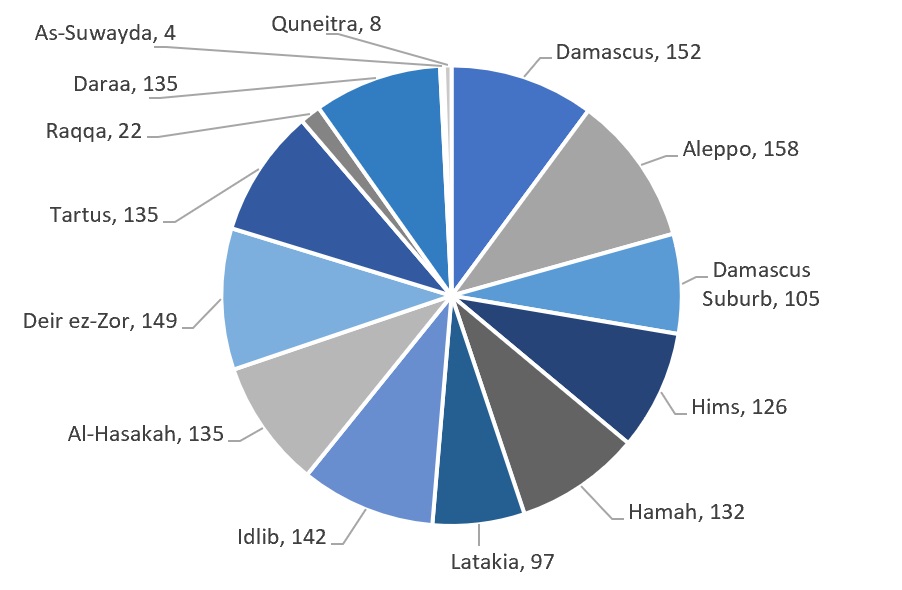
6. How many people does your household have?
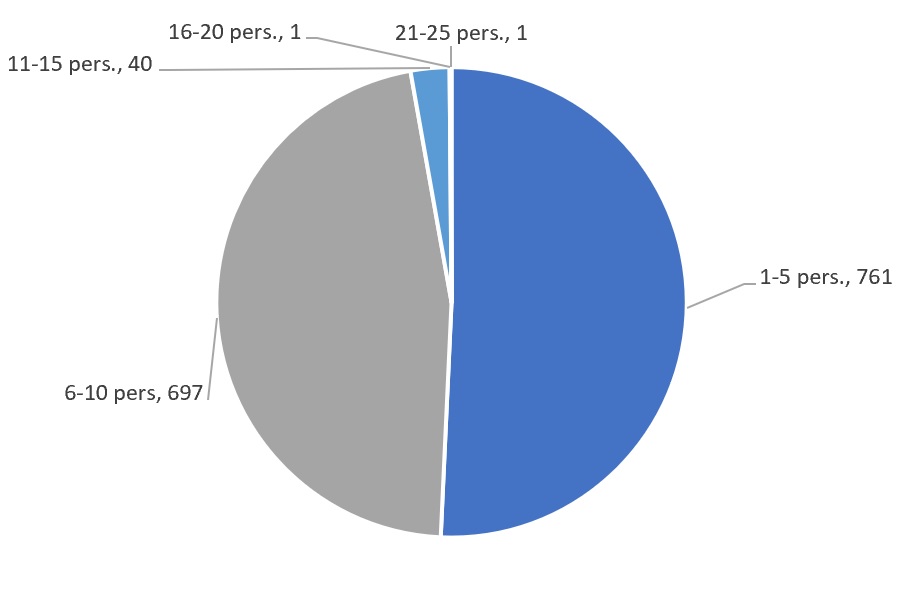
7. What is your relationship with the head of your household?
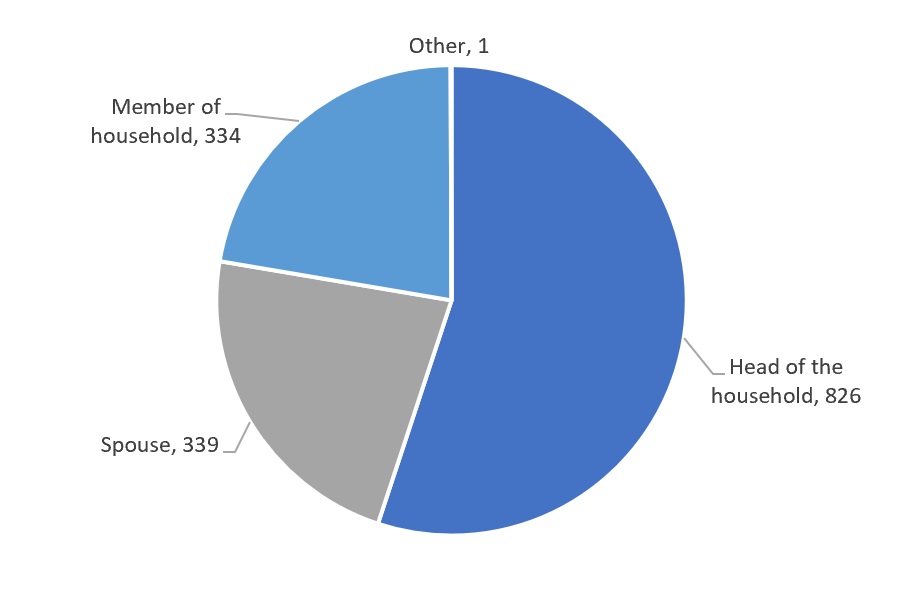
8. What is your current marital status?

9. How do you describe your religion?
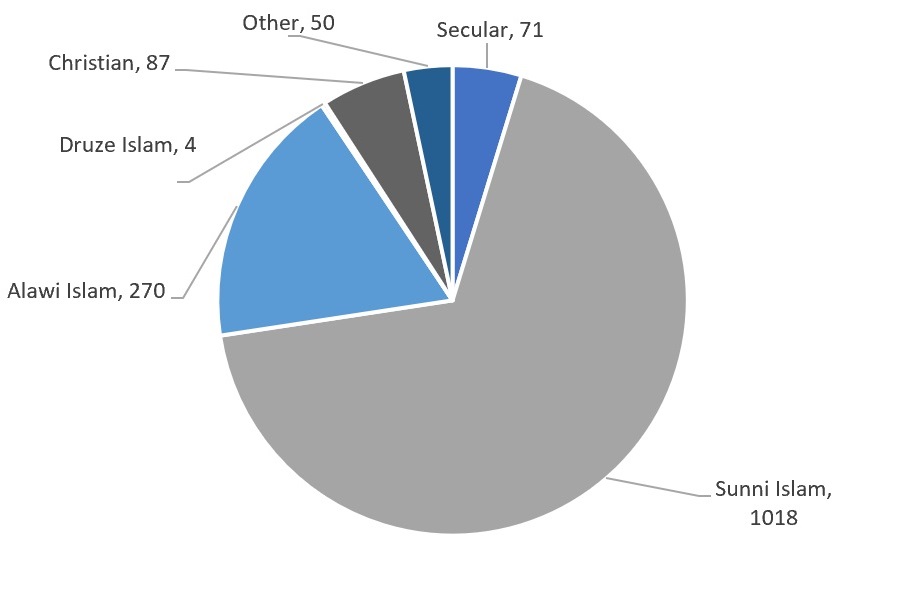
10. To what extent do you sympathize with the following principles/ideologies?
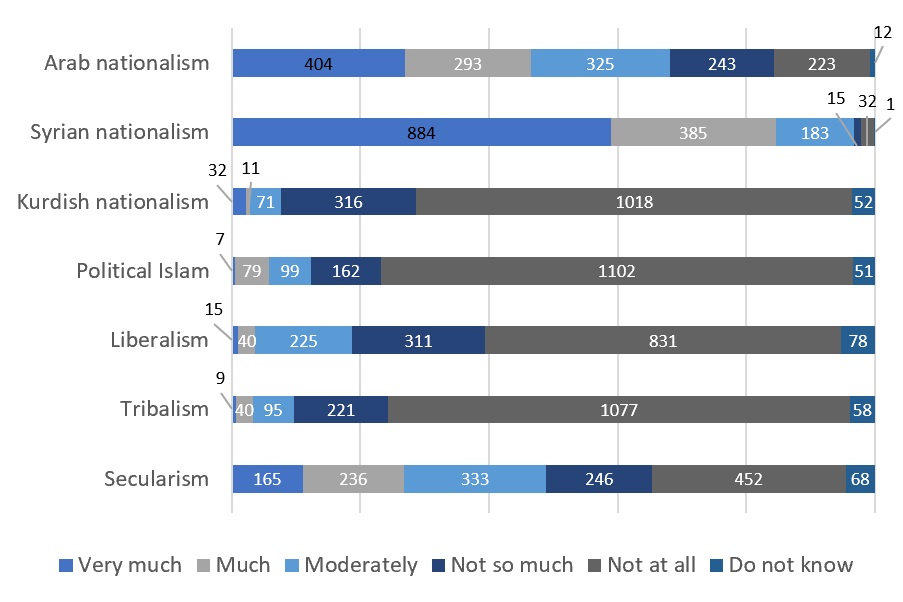
11-1. What is your native language?
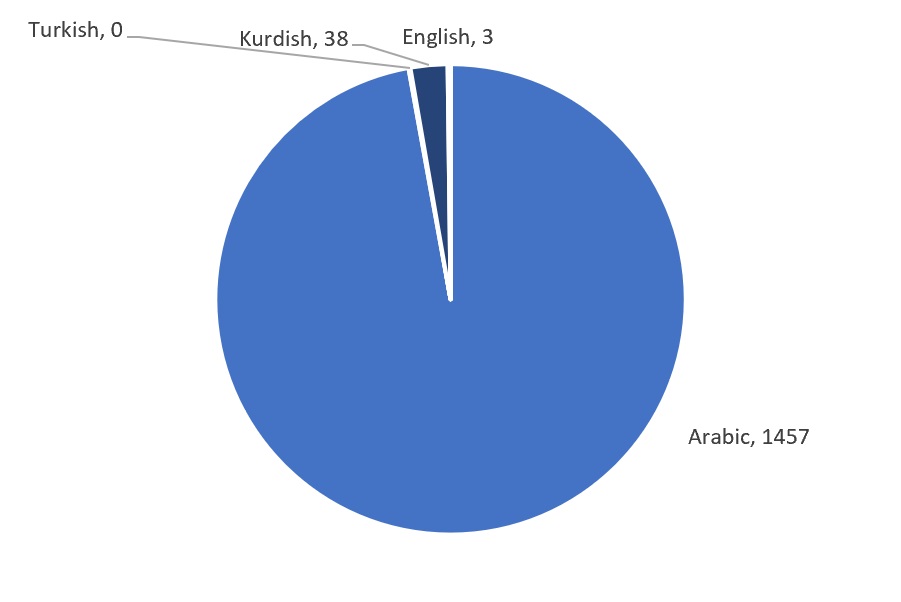
11-2. To what extent do you understand and know (read and write) other languages than your native language?

12. What is your highest education level?
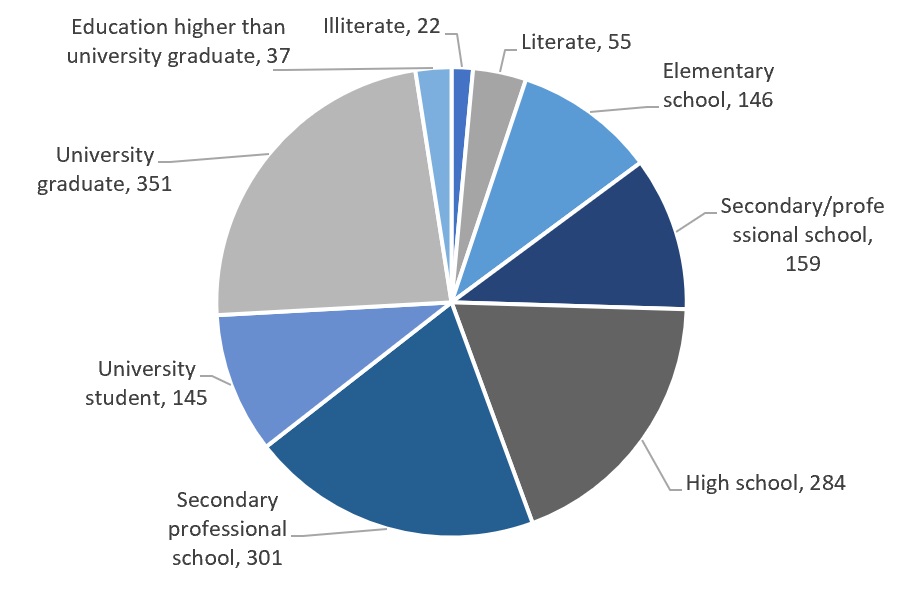
13. You are:

-
- Please answer about your current occupation (If you are engaged in multiple occupations, please answer about your most important occupation).
14-1. What is the type of occupation?
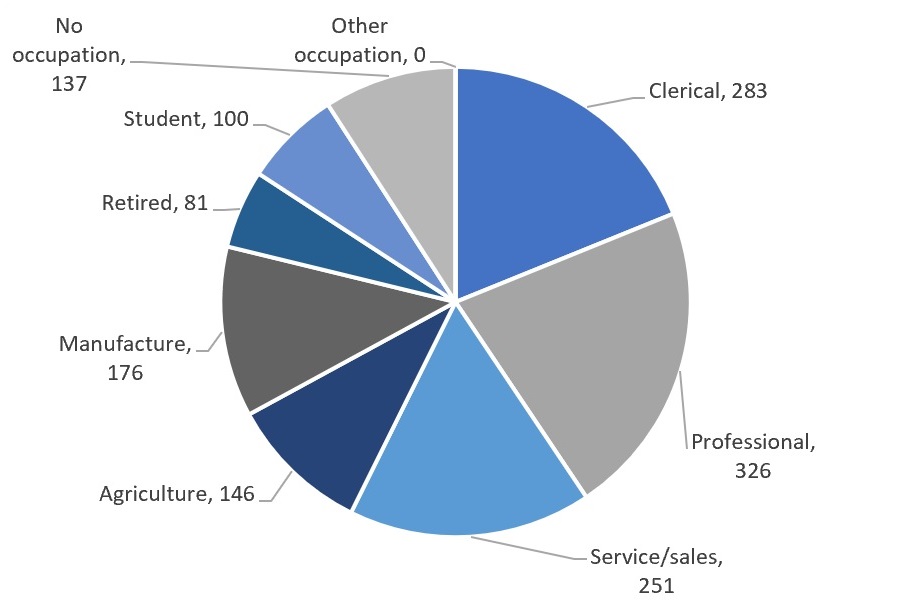
14-2. What is the type of employment?
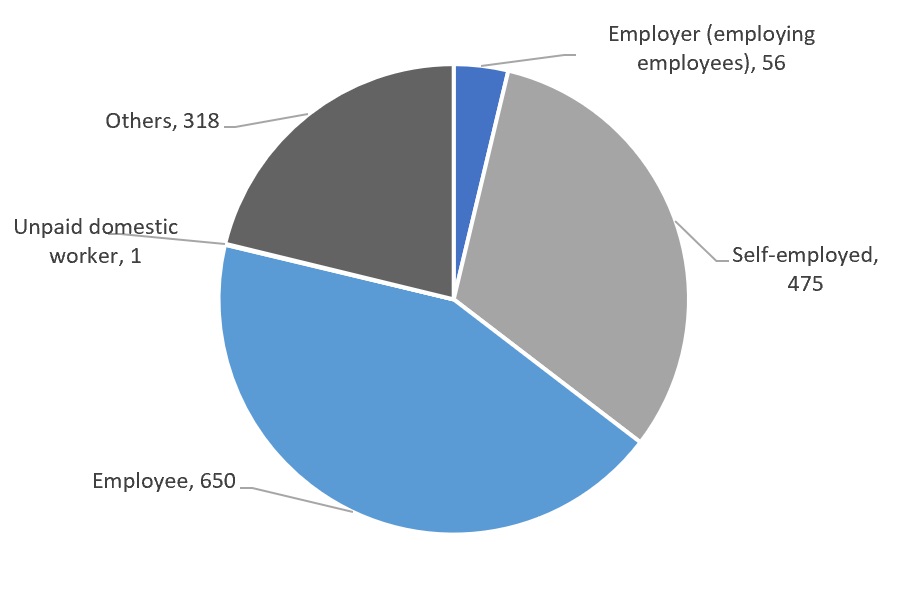
14-3. What is the sector?

14-4. What is the industry?

14-5. The following is the classification of your monthly income. To which group do you belong? Please answer the average amount earned last year, including income, pension, and so on.
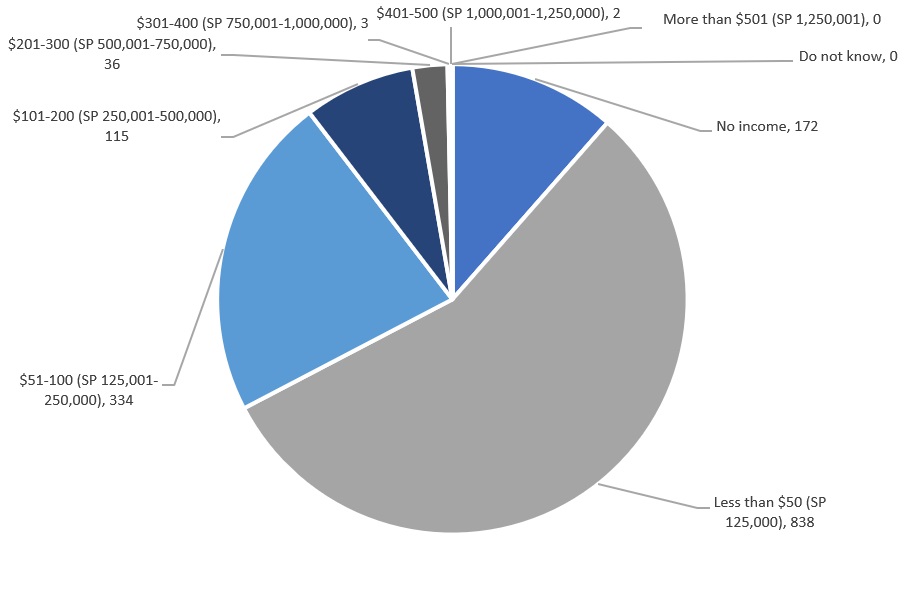
14-5-2. Do you earn your monthly income from more than one agency?
